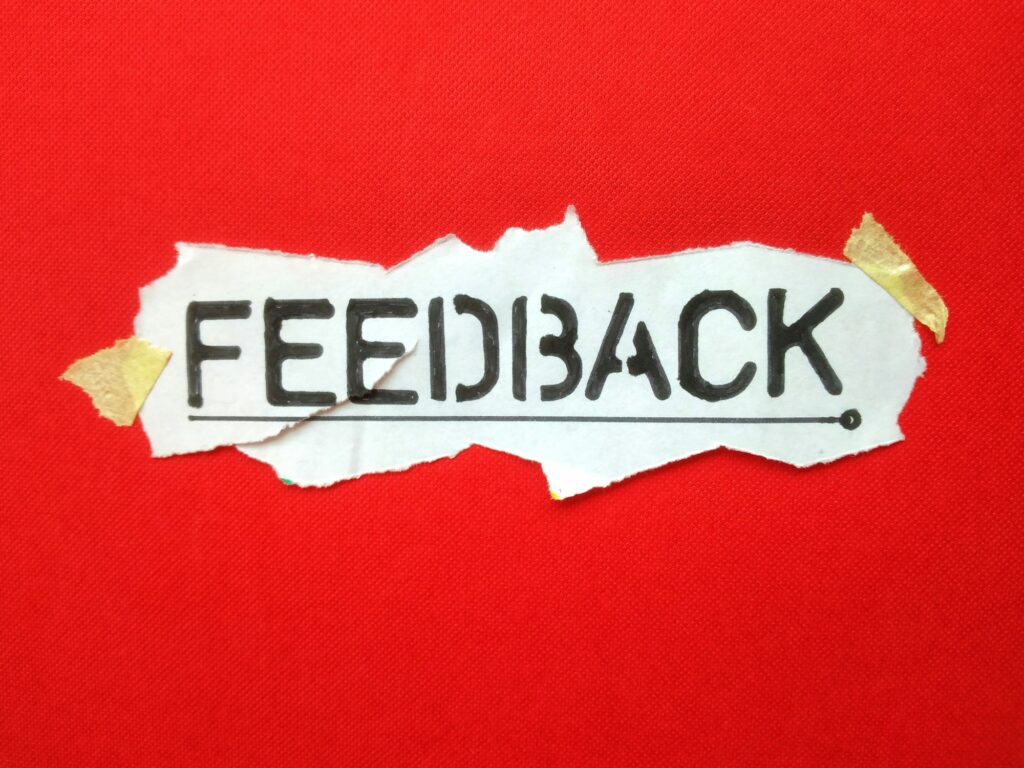
Transitioning your team to Agile methodologies can be a transformative journey, filled with opportunities for increased collaboration, improved productivity, and faster delivery times.
Agile is more than just a set of practices—it’s a mindset that focuses on iterative development, flexibility, and customer satisfaction.
“Agile isn’t a destination; it’s a journey of continuous improvement.”
Whether you’re new to Agile or looking to refine your approach, it’s essential to understand the fundamental steps that can ensure a successful transition.
From fostering a culture of openness to selecting the right tools, these steps will guide you through the process and help your team embrace Agile with confidence.

Transitioning your team to Agile methodologies requires a thoughtful approach that focuses on understanding, preparation, and gradual implementation.
Start by identifying the specific needs of your team and project, and then choose an Agile framework that aligns best with those requirements.
Involving your team from the outset is crucial—it ensures everyone is on the same page and reduces resistance to change.
The first step is education. Train your team to understand Agile principles and their roles within the chosen framework. This can be achieved through workshops, online courses, or even bringing in an Agile coach.
The goal is to build a solid foundation of knowledge, enabling your team to fully embrace the change.
Another critical aspect is communication. Clearly communicate the benefits of Agile and how it aligns with your team’s objectives.
Transparency about the process helps in setting realistic expectations and promotes a collaborative environment. Make use of Agile tools like Jira, Trello, or Asana to facilitate smooth communication and task management.
It’s also important to start small. Implement Agile practices incrementally rather than making wholesale changes overnight. Begin with a pilot project to test out the new methodology.
This approach allows you to identify pain points and make necessary adjustments before a full-scale rollout.
Furthermore, emphasize the importance of self-organization within the team. Agile encourages teams to take ownership of their work and make decisions collaboratively.
This empowerment not only increases productivity but also fosters a sense of responsibility and commitment among team members.
In summary, the successful transition to Agile is marked by careful planning, comprehensive training, and effective communication.
By gradually integrating Agile practices and tools, you can create a more flexible, responsive, and efficient team.
Embarking on the journey to Agile methodologies involves a series of calculated steps. Let’s dive into how you can successfully transition your team.
1. Secure Management and Stakeholder Buy-In: Start by gaining support from senior management and key stakeholders.
Highlight the benefits of Agile, such as increased transparency, faster delivery, and improved team morale. Their endorsement will pave the way for a smoother implementation.
2. Start Small: Choose a pilot project to introduce Agile practices. This allows your team to familiarize themselves with the new methodology without the pressure of affecting critical projects.
Use the insights gained from this pilot to refine your approach before a full-scale rollout.
3. Engage and Motivate Your Team: Agile thrives on a motivated and engaged team. Communication is crucial here—explain why the change is happening and how it will benefit everyone involved.
Celebrate small wins to build momentum and keep morale high.
4. Choose the Right Framework: With several Agile frameworks available, selecting the one that best fits your team’s needs is crucial.
Whether it’s Scrum for iterative development, Kanban for visual workflow management, or Extreme Programming (XP) for technical excellence—align the choice with your project requirements and organizational culture.
5. Provide Training and Support: Educate your team about Agile principles and the chosen framework. Workshops, training sessions, and access to resources are vital.
Offer continuous support and encourage a culture of learning and adaptability.
6. Foster an Agile-Friendly Environment: Adapt your work environment to support Agile practices.
This may involve rethinking workspace layout to encourage collaboration or investing in tools that facilitate Agile processes, such as task management software and communication platforms.
7. Implement and Iterate: As you roll out Agile practices, periodically review and adjust your approach.
Agile is founded on continuous improvement; use retrospective meetings to gather feedback and make necessary adjustments. This iterative process ensures that your team grows more adept with each cycle.
By following these steps, you can set the foundation for a successful transition to Agile methodologies, empowering your team to achieve higher efficiency and project success.

Implementing Agile successfully involves a combination of strategic planning and hands-on activities. First, get everyone on the same page by educating your team about what Agile is and how it can benefit them.
While it may sound straightforward, this foundational understanding is crucial. Encourage an open dialogue where team members can raise questions and express any concerns they might have.
This will not only help in easing their transition but will also foster a culture of collaboration and transparency.
Identify Agile Champions: Select team members who are enthusiastic about Agile. These Agile champions can motivate others and serve as points of contact for questions regarding Agile practices.
Start Small: Begin your Agile implementation with a pilot project. This enables your team to get hands-on experience with Agile practices in a low-risk environment.
Use this opportunity to experiment with different aspects of Agile and to make adjustments based on what you learn.
Regular Retrospectives: Conduct regular retrospectives to review what went well and what needs improvement.
Retrospectives provide a structured forum for feedback and continuous improvement, which are cornerstones of Agile methodologies.
Empower Your Team: Agile places a strong emphasis on self-organizing teams. Trust your team to make decisions and give them the autonomy to take ownership of their tasks. This empowerment will drive engagement and productivity.
Also, invest in the right tools and software that support Agile practices. Tools like JIRA, Trello, or Asana can facilitate task management, sprint planning, and tracking progress effectively.
Ensure that everyone is comfortable using these tools and understands how they can make their work more efficient.
Communication Is Key: Agile thrives on constant, clear communication. Establish regular stand-up meetings to keep everyone informed about the team’s progress, challenges, and plans for the day.
These meetings are vital for maintaining alignment and spotting issues early.
Remember, transitioning to Agile is a journey, not a destination. Be patient and prepared to iterate on your processes as your team adapts. Celebrate small wins and use challenges as learning opportunities to refine your approach.
Ultimately, the goal is to create a more responsive, efficient, and collaborative team.
Building a cross-functional team is about bringing together individuals with varied expertise to foster collaboration and accelerate project delivery.
In Agile, these teams are designed to be self-sufficient and capable of tackling any aspect of the project within their purview.
1. Product Owner: The Product Owner is the voice of the customer and holds the vision for the product.
They are responsible for maximizing the value of the product by managing the product backlog, setting priorities, and ensuring that the team is working on what’s most important.
2. Scrum Master: The Scrum Master facilitates the Agile process and ensures that the team adheres to Scrum practices.
They act as a coach for the team, helping to remove impediments, fostering a culture of continuous improvement, and protecting the team from outside distractions.
3. Development Team: The heart of a cross-functional team, the Development Team includes professionals from various domains such as developers, testers, and designers.
They collaborate closely to deliver a potentially shippable product increment at the end of each sprint.
Cross-training is pivotal in these teams. By encouraging team members to learn skills outside their core areas, you create a more resilient and adaptable team.
This not only helps when someone is unavailable but also fosters a deeper understanding and appreciation of the complexities each role entails.
By promoting open communication and shared responsibilities, your cross-functional team can navigate the challenges of Agile methodologies with greater efficiency and cohesion.
The end result is a team that’s flexible, responsive, and capable of delivering high-quality results consistently.
Embarking on an Agile transformation demands a solid foundation in training and education. Start by introducing your team to the core principles of Agile through workshops and training sessions.
These sessions should focus not only on methodologies like Scrum, Kanban, or Lean but also on the cultural shift required to embrace Agile successfully.
Next, ensure that each team member understands their unique role within the Agile framework. For example, developers should be well-versed in iterative development, while product owners must grasp the nuances of backlog prioritization.
Cross-functional understanding is critical, so consider implementing cross-training exercises to enhance versatility within your team.
An effective Scrum Master is essential to guide your team through this transition. They can help foster an environment of continuous learning and improvement.

Encourage your Scrum Master to provide regular feedback and organize retrospectives where the team can reflect on their processes and identify areas for enhancement.
Finally, consider hiring an Agile coach to provide expert guidance and support. An experienced coach can offer invaluable insights and help your team navigate the complexities of Agile adoption.
They can tailor the training to fit your organization’s specific needs, ensuring a smoother and more efficient transition.
When it comes to selecting the right Agile framework for your team, understanding the nuances of each option is crucial.
Scrum, Kanban, and Extreme Programming (XP) each offer unique benefits and can be tailored to fit different project requirements and organizational cultures. Let’s break down the primary features and advantages of each.
Scrum: Scrum is one of the most widely adopted Agile frameworks, with 87% of organizations incorporating it into their processes, according to the State of Agile report.
This framework emphasizes iterative progress through sprints, predefined roles such as Scrum Master and Product Owner, and regular ceremonies like daily stand-ups, sprint planning, and retrospectives.
Scrum is particularly effective for complex projects requiring frequent reassessment and adaptation.
Kanban: Kanban offers a more flexible, visual approach to project management. Unlike Scrum’s structured, time-boxed sprints, Kanban focuses on continuous delivery and efficiency.
Teams using Kanban can visualize their workflow on a Kanban board, breaking down tasks into manageable units to track progress. This method allows for a smoother handling of fluctuating priorities and is ideal when workflow consistency is key.
Extreme Programming (XP): XP is designed to improve software quality and responsiveness to changing customer requirements.
This framework emphasizes technical practices such as TDD (Test-Driven Development), continuous integration, and pair programming. XP works best in dynamic environments where customer satisfaction and adaptability are paramount.
Choosing the right framework isn’t about adhering strictly to one methodology but rather finding what best supports your team’s strengths and project goals.
As you experiment with different Agile frameworks, you might even find a hybrid approach, combining elements from Scrum, Kanban, and XP, to create a bespoke system tailored specifically to your team’s needs.
Remember, the goal is to enhance collaboration, flexibility, and efficiency. Start by assessing your team’s current workflows and challenges, then select the Agile framework that best addresses those needs.
Training and continuous feedback are essential as your team adapts to the new methodology, ensuring a smoother transition and long-term success.

Transitioning to Agile methodologies can be transformative for your team, but it’s essential to be aware of common pitfalls to ensure a smooth and successful shift. Here are some key areas to watch for:
One of the most significant barriers in Agile transformation is insufficient executive backing. Executive support is crucial as it ensures that the necessary resources, training, and support are available.
Without buy-in from the top, Agile initiatives are likely to flounder.
Agile methodologies require a shift in mindset as well as practices. Ensure all team members, including stakeholders, receive appropriate training.
Knowledge is power; providing robust training on Agile principles enables your team to adapt more effectively.
Change can be uncomfortable, particularly for those used to traditional methodologies. Foster an environment where feedback is welcomed, and concerns can be addressed openly.
Encourage a growth mindset and demonstrate the benefits of Agile to ease the transition.
Not all Agile practices are a one-size-fits-all solution. Teams often fall short by strictly adhering to Agile frameworks without adapting them to their specific needs.
Be flexible and allow your team to innovate within the Agile principles to find what best works for them.
Effective Agile teams are collaborative. Ignoring the importance of team dynamics and interpersonal relationships can hinder progress. Invest in building a cohesive, cross-functional team where communication and collaboration are prioritized.
Agile is not just about following processes; it’s about delivering value. Being overly rigid with Agile ceremonies and artifacts can shift focus from the real goal.
Emphasize outcomes over processes to keep your team aligned with the business objectives.
Agile thrives on iteration and continuous improvement. If your team is not regularly reflecting on its practices and outcomes through retrospectives, you miss out on valuable opportunities for enhancement.
Encourage a culture of constant learning and adaptation.
Agile transformation is not an overnight success. It requires time, patience, and persistent effort. Setting unrealistic expectations can lead to frustration.
Set manageable milestones and celebrate small victories to maintain momentum and morale.
By being mindful of these common pitfalls, you can better navigate the transition to Agile methodologies and pave the way for a more collaborative and effective team environment.
Ensuring a smooth transition to agile requires careful planning and execution. Start by securing executive support; leadership buy-in is crucial for allocating resources and driving the change.
Next, provide comprehensive training for your team to understand agile principles and practices. Begin with a pilot project to test the waters.
Communicate transparently and continually, fostering an environment open to feedback and iterative improvements. Lastly, utilize agile coaches to guide the team through their initial sprints.
Transitioning to agile can present several challenges, such as resistance to change, lack of understanding, and unrealistic expectations. To overcome resistance, highlight the benefits and successes of agile with case studies and examples.
For lack of understanding, offer ongoing training and mentorship programs. Combat unrealistic expectations by setting clear, incremental goals and celebrating small wins.
Finally, work on changing the organizational culture to one that embraces flexibility, collaboration, and continuous improvement.
Training a team for agile methodologies involves a blend of formal education and practical experience.
Start with foundational courses that cover the basics of agile and its various frameworks like Scrum, Kanban, and Extreme Programming (XP). Next, engage the team in hands-on activities, such as simulations or pilot projects.
Utilize agile coaches and mentors for personalized guidance. Regularly hold workshops, retrospectives, and reviews to reinforce learning and identify areas for improvement. Remember, training is an ongoing process, not a one-time event.
Measuring the success of an agile transition involves both qualitative and quantitative metrics. Track team performance through key performance indicators (KPIs) such as velocity, cycle time, and throughput.
Monitor customer satisfaction and feedback to see if deliverables meet user needs. Assess team morale and engagement through surveys and personal feedback.
Additionally, look at the adaptability of the team in responding to change and unexpected challenges. Success is typically indicated by improved project outcomes, enhanced team collaboration, and increased customer satisfaction.
When transitioning to Agile, it’s essential to track specific metrics to ensure the movement is heading in the right direction. Among the most critical metrics are:
Transitioning your team to Agile methodologies can be a transformative journey, paving the way for enhanced productivity, increased customer satisfaction, and superior quality in deliverables.
This process requires careful planning, robust training, and continuous support from leadership.
Embrace the core values of Agile—individuals and interactions, working software, customer collaboration, and responding to change—to truly unlock your team’s potential.
By avoiding common pitfalls and fostering a culture of flexibility and continuous improvement, you ensure that Agile is more than just a set of practices; it becomes a mindset that drives your team toward consistent growth and success.
Remember, the journey to Agile is ongoing. Regularly reflect on your practices, be open to change, and strive for simplicity in design and execution.
This commitment will reduce risks and lead to small, yet significant, releases that delight your customers.
Ultimately, the success of Agile lies in its collaborative nature. Engage your team, prioritize communication, and maintain a strong focus on delivering value.
With perseverance and the right strategies, you can navigate the intricacies of Agile and lead your team toward a more efficient and satisfying way of working.



